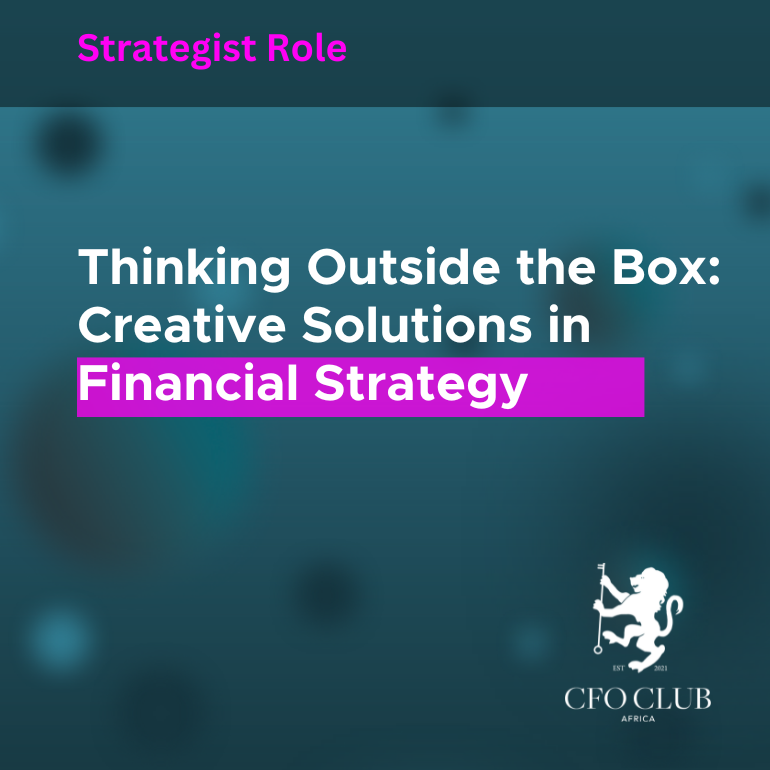Thinking Outside the Box: Creative Solutions in Financial Strategy
Money is the backbone of every business, but managing it wisely requires more than just following the usual playbook. Companies that stick to the same old strategies, cutting costs, raising prices, or securing loans, often find themselves stuck in a cycle of short-term fixes. The real game-changers are those that approach finance with fresh ideas, exploring unconventional ways to improve cash flow, boost revenue, and stay competitive. Here’s how businesses can step beyond tradition and rethink their financial strategies in a creative, impactful way.
1. Smarter Ways to Cut Costs Without Hurting Growth
When businesses need to save money, the first instinct is often to cut costs across the board. But slashing budgets without a plan can hurt the company more than it helps. Instead, businesses can use value-based cost-cutting, which means focusing on reducing expenses that don’t contribute to growth while keeping the ones that do.
For example, instead of cutting employee training programs, a company could move them online to save money while still investing in employee development. Similarly, instead of laying off workers, a business could offer flexible work arrangements or outsource specific tasks to freelancers, reducing overhead costs.
Another cost-saving strategy is collaborative cost-sharing. This means partnering with other businesses to share expenses. For instance, two companies could share office space, split delivery costs, or jointly invest in new technology to reduce financial pressure on each business.
Some companies are also moving towards subscription and usage-based models. Instead of buying expensive software outright, they pay a monthly fee for cloud-based tools, ensuring they only pay for what they use. This approach helps businesses manage cash flow more effectively.
2. Finding New Ways to Make Money
Revenue doesn’t just have to come from selling products or services in a traditional way. Companies can experiment with freemium models, where they offer a basic product for free and charge for premium features. Think of how apps like Spotify and LinkedIn give users free access but charge for extra features.
Another creative approach is partnering with other businesses to grow revenue. A coffee shop could team up with a local bakery to offer special discounts, drawing in customers for both businesses. Similarly, businesses can explore affiliate marketing, where they earn a commission by promoting another company’s products.
Crowdfunding and community financing are also great options. Platforms like Kickstarter and GoFundMe allow businesses to raise money directly from customers and supporters, which can be a game-changer for startups and small businesses.
3. Getting Creative with Funding
Not every business has access to big bank loans or investors, so thinking outside the box is key. Many companies are now turning to fintech solutions—modern financial technology that offers alternative funding options. For example, businesses can get loans based on AI-driven assessments instead of relying on traditional credit scores.
Another option is revenue-based financing, where a business gets funding in exchange for a percentage of future sales instead of fixed repayments. This is great for businesses with fluctuating incomes, such as seasonal businesses.
Some companies even offer Employee Stock Ownership Plans (ESOPs), allowing employees to become part-owners of the company. This boosts motivation while also providing an alternative to traditional financing.
4. Using Psychology to Improve Financial Decision-Making
Money management isn’t just about numbers—it’s also about behavior. Behavioral finance focuses on how psychology influences financial decisions, and companies can use this to their advantage.
For example, businesses can use nudging strategies to encourage better financial habits. A company offering employee retirement plans might automatically enroll employees rather than waiting for them to sign up, ensuring better long-term savings.
Some businesses also use gamification to make financial management fun and engaging. Banking apps now offer rewards for saving money or hitting budgeting goals, making it easier for people to manage their finances.
5. Making Better Use of Data for Financial Planning
Data is a powerful tool for making smarter financial decisions. Businesses are now using predictive analytics, which means using past data to predict future trends. For example, an online store can analyse customer buying habits to predict which products will sell best in the next season, allowing for better inventory management.
Another way to use data is through real-time dashboards, which help businesses keep track of cash flow, expenses, and profits at a glance. This allows for faster, more informed decision-making instead of waiting for monthly reports.
6. Managing Suppliers and Payments More Efficiently
Businesses rely on suppliers to keep running, but managing payments can be tricky. One innovative approach is dynamic discounting, where businesses offer early payment to suppliers in exchange for discounts. This benefits both sides, the business saves money, and the supplier gets paid faster.
Another method is reverse factoring, where a financial institution pays a company’s suppliers upfront, allowing the business to extend its own payment deadlines without damaging supplier relationships. This keeps the supply chain running smoothly while improving cash flow.
7. The Future of Finance: Sustainable and Ethical Investing
More businesses are recognising that financial success isn’t just about profits—it’s also about sustainability. Green bonds and impact investing allow businesses to attract investors who care about social and environmental responsibility. Companies that prioritise ethical finance often see stronger customer loyalty and long-term growth.
Another approach is the circular economy, where businesses find ways to reduce waste and turn by-products into new revenue streams. For example, a brewery might sell its leftover grain to farmers for animal feed instead of throwing it away.
Final Thoughts
Thinking outside the box in financial strategy isn’t just for big corporations, it’s something businesses of all sizes can do. By rethinking costs, exploring new revenue streams, using alternative funding options, and making smarter financial decisions, companies can stay ahead of the competition and build a more resilient financial future.
In today’s world, being creative with finances isn’t just a luxury, it’s a necessity. The businesses that embrace innovation will be the ones that thrive.

